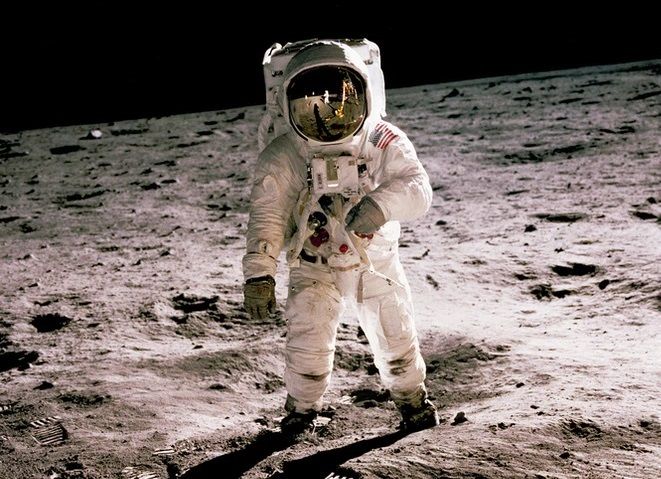
ESA and NASA have signed an agreement that will take Europeans to the Moon. The agreement outlines that Europe will contribute with a set of essential parts to NASA’s lunar Gateway, which will be humanity’s first outpost in orbit around the Moon. In return, ESA can send up to three European astronauts to the Gateway as part of future missions within NASA’s Artemis program.
“This MoU marks a critical point in Europe’s trajectory: it confirms we are going forward to the Moon, not just in terms of equipment and technology, but also with our people. Europe will play a central role in the new era of global space exploration along with NASA and our partners, delivering exemplary, game-changing architectures to explore the Moon and Mars and inspiring generations to come,” says ESA Director-General Jan Wörner in a press release.
Jim Bridenstine, the Administrator of NASA, was also happy after signing the agreement. “Gateway will continue to expand NASA’s cooperation with international partners like ESA, ensuring the Artemis program results in the safe and sustainable exploration of the Moon after the initial human lunar landing and beyond”, he said when interviewed for NASA’s press release on the same topic.
With @JimBridenstine I signed the #Artemis Gateway @esa–@nasa MoU: taking 20 years of @Space_Station collaboration #ForwardtotheMoon. This marks a critical point for Europe: we are going not only with equipment, but also with European astronauts! https://t.co/uNsAMEwx8p pic.twitter.com/JqQtttubEx
— Jan Wörner (@janwoerner) October 27, 2020
From @space_station to the Moon! Today’s agreement formalizes plans for NASA & @ESA to join together to build the Gateway and a future of sustainable lunar exploration with the #Artemis program. Others to join us soon! https://t.co/ZzXXwHmSiE pic.twitter.com/ST1vbPfggj
— Jim Bridenstine (@JimBridenstine) October 27, 2020
The European commitment to the Gateway as agreed in the new Memorandum of Understanding (MoU) includes a habitat module for astronauts, named I-Hab, and another module that will provide refueling capability and communications, named ESPRIT. The latter will also include a window from which the astronauts can observe the Moon and take pictures, similar to the Cupola observatory module of the International Space Station.
“Europe will provide crew accommodation, telecommunications, refuelling and an amazing view of the Moon thanks to the ESA contributions to the lunar Gateway”, David Parker, Director of Human and Robotic Exploration at ESA, said in a statement. “And what is more, European astronauts will fly to the Gateway to live and work in deep space for the first time.”
His optimism is echoed by Marco Ferrazzani, Head of Legal Services at ESA, who was also a main negotiator for the MoU: “For our future role in exploration it will have the same magnitude as the MoU for the International Space Station.”
NASA has indicated further plans to sign similar agreements with more international partners going forward. The idea with the Gateway is to serve as a base in lunar orbit for crewed missions to the Moon’s surface and also serve as a station for research and technology demonstrations needed as preparations for future crewed Mars missions, meaning that this MoU is not only important for European and American lunar exploration but also for international Mars-travel in the future.
ESA has previously already agreed to construct two service modules for NASA’s spacecraft taking the astronauts to the Moon. These European Service Modules, as they are called, provide power and propulsion as well as water and oxygen for the Orion spaceships. In the MoU at hand, ESA confirms its commitment to this delivery, adding to a former commitment to deliver two such modules and hence making them four in total.
It will be the third lunar flight of the Orion that will take the first astronauts to the Gateway. According to the Artemis program plan, the first one will fly without crew and the second one will take a crew on a round-trip around the Moon without stopping on the way.
Albeit a giant leap for the Europeans to travel to the Gateway, the small step on the Moon is left for later. This new agreement won’t yet bring European astronauts to the lunar surface, only to the orbiter. But that’s a fantastic first step!




